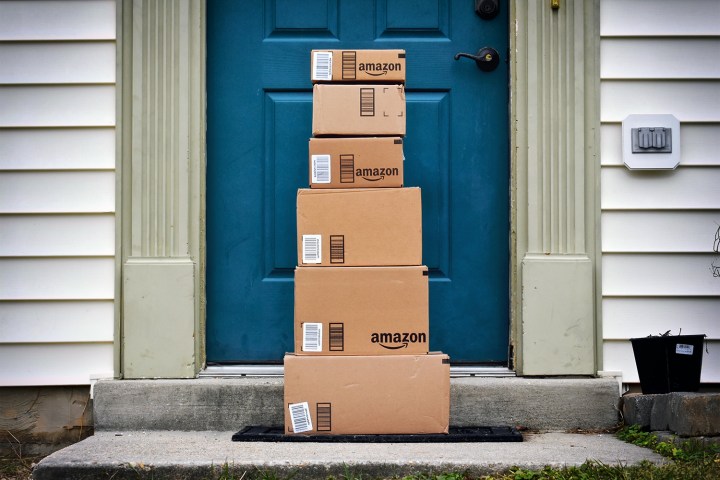

Like last year, Amazon Prime Day is about one thing: Amazon. If you consider Black Friday to be consumerism at its worst, well, at least it’s equal opportunity consumerism. On Black Friday we get to enter stores and search for sales, not buy anything, and still come out with the same amount of money in our pockets.
The point of Amazon Prime Day isn’t to save people money. Nope. Amazon’s real goal is attracting more Prime subscribers. You can’t save money if you don’t subscribe. And that’s why I hate it.
Prime Day means a day to buy Prime
Amazon Prime Day isn’t about deals, bargains, or wiping the floor with Black Friday. That would suggest it’s something that’s designed to benefit the general public. No. It’s all a massive thinly veiled ploy to get everyone to sign up for Amazon Prime. It’s like one of those shifty ‘liquidated stock’ auctions where you have to pay an up front fee to get a chance to bid on a filing cabinet, or a pallet of printer paper in a dingy warehouse.
Don’t think it’s true? Research company CIRP says Amazon Prime membership grew by 35 percent in 2015 to 54 million people, up from 40 million at the end of 2014. “Growth was spread more evenly across the year, in a large part due to the success of Amazon Prime Day,” the report noted. In other words, the holiday season used to be the only time Prime membership saw a boost — for the fast shipping, presumably — so Amazon needed something mid-year to help convince people that Prime is for life, not just Christmas.
Think I’m making it up? Amazon says “More new members tried Prime worldwide than any single day in Amazon history,” on Prime Day 2015. That’s the kind of news Amazon wants to hear. Amazon Prime members are less likely to shop elsewhere. They paid $100 for the privilege of getting free two-day delivery, so they may as well make the most of it.
Amazon products top the best seller lists
“We weren’t sure whether Prime Day would be a one-time thing, or if it would become an annual event,” Amazon wrote straight after Prime Day 2015, before continuing, “After yesterday’s results, we’ll definitely be doing this again.” Absolutely! After all, the fastest selling deal was apparently not a PlayStation or a Blu-ray player, but Amazon’s own Fire TV Stick, which went on to become the best-selling Prime Day product in the world. Amazon also sold more Fire tablets than it did on Black Friday 2014. These devices, remember, are doors into Amazon’s world, where you can easily and quickly spend even more money. We expect the Amazon Echo to get pushed hard.
How many people sobbed last year at the realization they all paid $100 for a chance to grab a pair of Crocs.
But what about last year’s deals? They were really awesome, right? Amusingly, when listing the top selling items by country, Amazon had to exclude its own products, because otherwise the list would just say Amazon Fire TV Stick. Instead, we learned Canadians were falling over themselves for Huggies Diapers, Italy swooned for a Logitech keyboard, and both Germany and Austria couldn’t hold back on a pair of Croc Sandals.
We wonder how many people passed out from the excitement of bagging these stellar items, then a month later, sobbed as the realization they all paid $100 for a chance to grab a pair of Crocs.
Amazon also saw a massive spike in traffic on the day, with Experian showing 86.4 million visits, obliterating the previous record held by Cyber Monday 2014 by 51.5 percent. Experian also looked at web searches, showing the obviously highly desirable Amazon Fire TV Stick getting 417 percent more searches than the week before. Amazon was everywhere. That level of publicity and mind-share is hard to buy.
People must have just loved it, right? Not really. Adobe plugged the #primeday hashtag into its sentiment tool, to ascertain how bargain hunters felt about the deals. Only 23 percent felt ‘joy,’ while 50 percent felt ‘sadness.’ Sounds bad. Not for Amazon. If 50 percent of the new Prime members cancel their membership before having to pay up for it, that still leaves 50 percent handing over $100 each, and that’s not including those that forget to cancel before the deadline.
Here we go again
Despite the negative sentiment, Amazon Prime Day 2015 was a fantastic, headlining success for Amazon. How will Prime Day 2016 be? Amazon’s not stupid. It understands that it can’t pull the wool over our eyes about the true meaning of Prime Day for another year, so it’s making the effort to talk about the brilliant deals that will be available to Prime members on July 12.
TVs, toys, headphones, and um, slow cookers are all highlighted. In fact, we’re told there will be more than 100,000 deals from which to choose. Oh, and plenty of Amazon products too, of course. It’s even tweeting about deals have already started showing up. Checking them reveals that for every pair of $80 Jaybird X2 Bluetooth headphones, there are dozens of lightbulbs, ice cube trays, and nutritional supplements. I’ve already wet myself in unbridled excitement…
If you’re already a Prime member, then all hope is lost. Go get at least one deal (maybe you’ve worn out those Crocs already) on Prime Day, and enjoy the rest of the benefits that come with membership. They’re actually pretty good. However, if you’re not a member but plan to sign up for Prime Day’s deals, please set a reminder to cancel your membership.
The clue is in the name. Prime is really the only thing Amazon wants you to buy on Prime Day, so just make sure you really want it.



